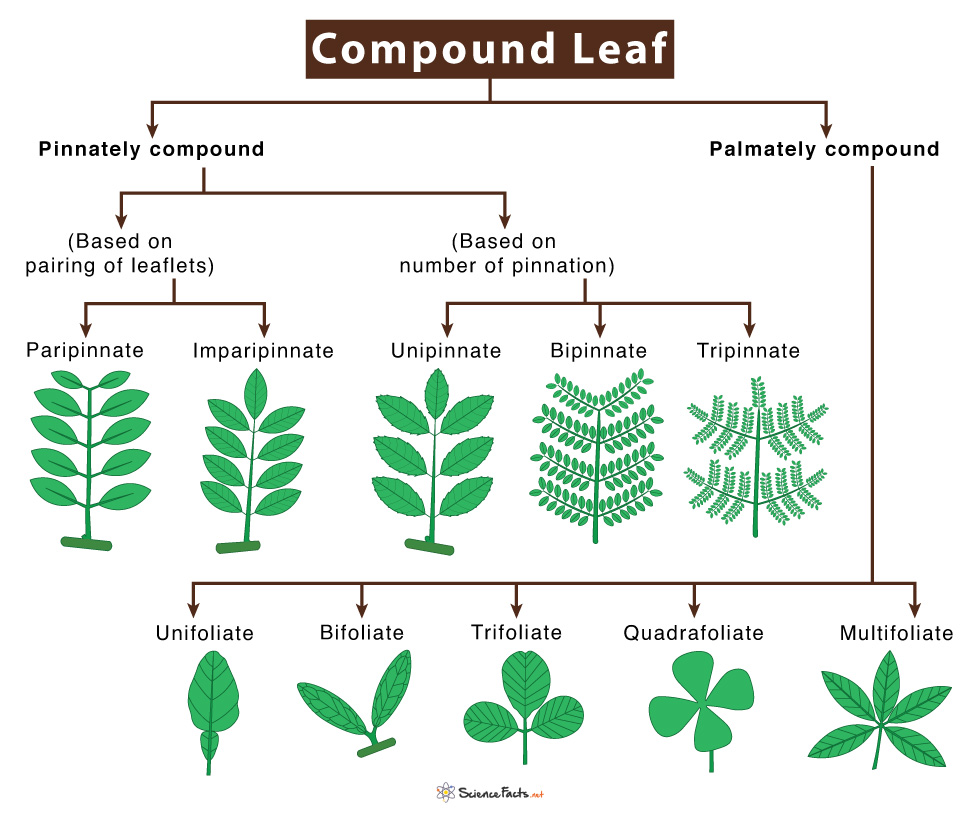What is a Compound Leaf
Types of Compound Leaves
Compound Leaf Identification
Examples: Neem, clover, rose, hickory, walnut, pecan, ash.
Pinnately Compound
In this type of compound leaves, the leaflets arise symmetrically from either side of the central leaf stalk. These leaves get their name from the Latin word ‘pinna’ meaning ‘feather’, or ‘wing’, as here the leaflets look like they are pinned to the midrib of the leaf, resembling a feather. Example: Hickory, ash, walnut, pecan, black locust. Types
- Based on pairing of leaflets The leaflets of these leaves may be paired evenly or oddly. Depending on that, pinnately compound leaves are of two types:
- Based on number of pinnation Depending on how many times the leaflets are getting attached or pinned to the midrib; pinnately compound leaves are classified into the following types:
Palmately Compound
Palmately compound, as the name says, these leaves look like the palm of our hands. Here the leaflets radiate outwards from the petiole, resembling the fingers of the palm. The petiole or leaf stem, in turn, gets attached to the twig. Example: Buckeye, horse chestnut, poison ivy, umbrella plant. Types Based on the number of leaflets, the palmately compound leaves are of the following types:
